Old houses often come with unexpected surprises, and not all of them are pleasant. If you’ve recently inherited a property or haven’t cleaned out your storage areas in years, you might be unknowingly housing dangerous chemicals. These products, many of which are now banned or heavily regulated, can cause severe health issues if mishandled or accidentally ingested.
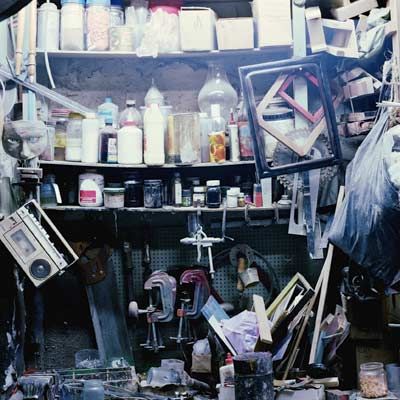
This guide will help you identify, safely dispose of, and find alternatives to these hazardous relics of the past. If you find any of these chemicals, contact the hazardous waste collection agency in your town, city, or state to learn how to handle them and make sure you don’t harm yourself or the environment in trying to get rid of them.
Deadly Pesticides and Insecticides
All pesticides are, to some extent, toxic—they have to be in order to repel or kill pests. However, over time, the Environmental Protection Agency (EPA) has determined that certain chemicals pose hazards so extreme they shouldn’t be in the home. Check your pesticides for the following ingredients.
Strychnine
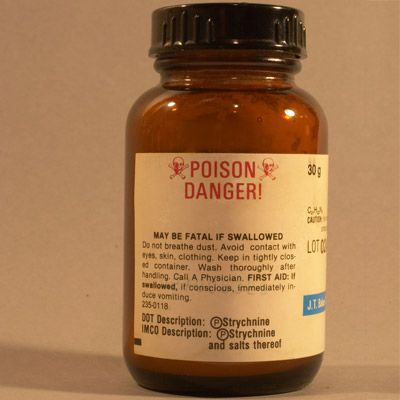
Strychnine, a potent rodenticide, is infamous for its use in both fact and fiction as a deadly poison—it’s a favorite plot device of Agatha Christie. Astoundingly, low doses of strychnine were once used by athletes as performance enhancers, often to deadly results. Ingestion of strychnine leads to a horrific death, involving severe nausea, violent convulsions, and eventual asphyxiation due to muscle lockdown.
Today, strychnine is heavily restricted and only used in rodent baits meant for underground. You’re unlikely to find it around the house, but if you do, dispose of it properly.
DDT
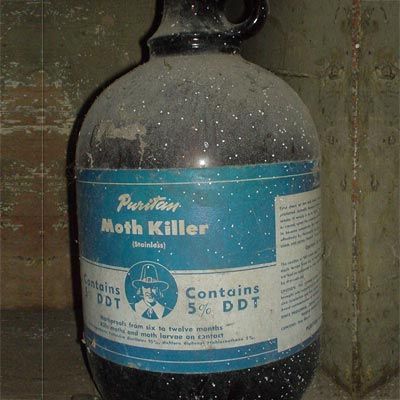
Dichloro-diphenyl-trichloroethane, commonly known as DDT, was once widely used in agriculture and home gardens. This potent pesticide gained notoriety after Rachel Carson’s 1962 book Silent Spring highlighted its devastating environmental impact, particularly on bird populations. The United States banned DDT in 1972 due to its potential carcinogenic effects and adverse impacts on pregnancy and growth.
Despite being outlawed for decades, DDT can persist in the environment, and you may still find it in old storage areas. As late as 2006, one homeowner brought a 50-pound bag of the pesticide to cleanup authorities.
Diazinon
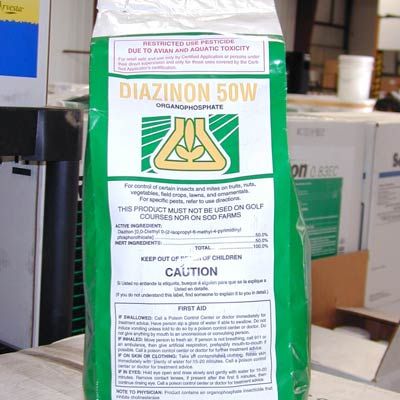
Diazinon was a popular pesticide used to combat cockroaches, ants, and fleas in homes during the 1970s and 1980s. This organophosphate compound works by inhibiting enzymes essential for proper nervous system function—not just in insects, but in humans as well. Exposure to diazinon can lead to a range of symptoms, including weakness, headaches, nausea, and slurred speech.
While the EPA banned diazinon for residential use in 2004, products purchased before the ban may still be lurking in some homes. People still use it in industrial agriculture.
Chlorpyrifos (Dursban)
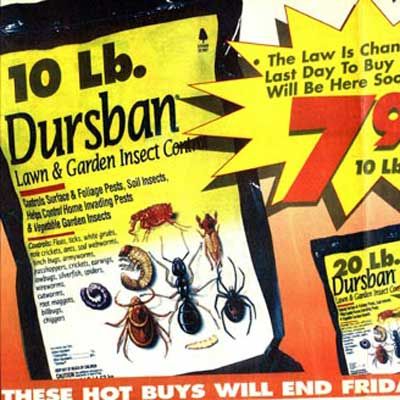
Chlorpyrifos, often sold under the brand name Dursban, was once one of the most widely used pesticides in the U.S. This organophosphate insecticide, related to nerve gas, can cause severe health issues, including asthma and reproductive problems. In high doses, it can lead to respiratory paralysis and death.
The EPA banned chlorpyrifos for residential use in 2000 but, like with diazinon, it’s still permitted in commercial agriculture. It’s also sold overseas, so if you somehow have pesticides from other countries, take them to hazardous waste disposal centers.
Hazardous Cleaning Agents
Many older cleaning products contain potent chemicals that are now known to be extremely dangerous. These products can cause severe burns, respiratory issues, and long-term health problems if not handled properly.
Lye
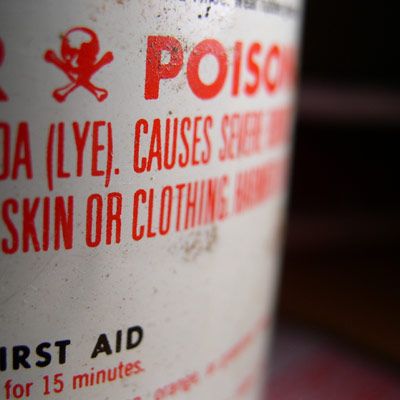
Lye, or sodium hydroxide, is a highly corrosive alkaline substance once commonly used in drain cleaners and other household products. While it’s actually a legal, useful chemical in many applications, from curing lutefisk to making soap, it’s too dangerous to have around the house, particularly if you have children or pets.
Lye is capable of causing severe burns on contact with skin or eyes. Inhaling lye fumes can cause throat swelling and lung inflammation. If ingested, it can eat through the digestive tract and even induce a coma.
Trisodium Phosphate (TSP)
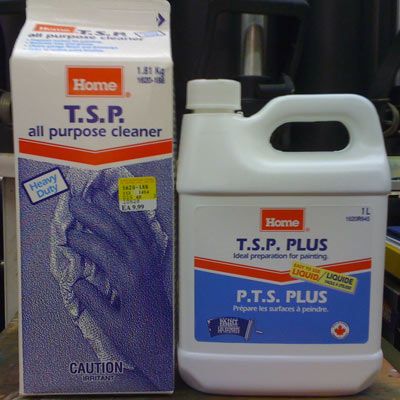
Trisodium phosphate (TSP) was a key ingredient in most household cleaning solutions until the 1960s. While effective for tough cleaning jobs, TSP poses significant environmental risks. When released into water systems, phosphates can lead to oxygen depletion, harming aquatic ecosystems.
In humans, concentrated amounts of TSP can cause breathing difficulties, throat swelling, and skin burns. While still available in some areas as a degreaser or cleaning additive, TSP is banned in many states due to its ecological impact.
Toxic Treatments and Coatings
Many old household treatments and coatings contain dangerous substances. These products can pose long-term health risks, especially when they begin to deteriorate.
Lead Paint
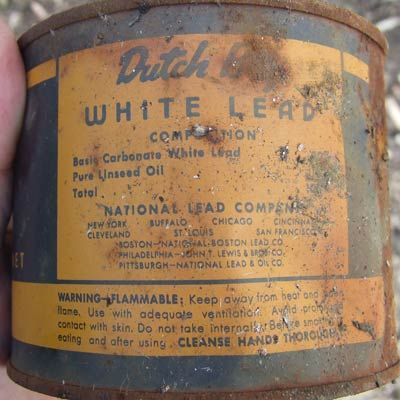
Lead paint, banned for residential use in 1978, remains a significant health hazard in older homes. Exposure to lead can cause kidney and reproductive problems in adults and severe developmental issues in children. If you suspect your home has lead paint, especially in areas where it’s peeling or chipping, have it professionally tested and removed as soon as possible.
The EPA requires contractors working on pre-1978 homes to be certified in lead-safe practices. Never attempt to remove lead paint yourself, as improper removal can create hazardous dust that’s easily ingested or inhaled.
Creosote
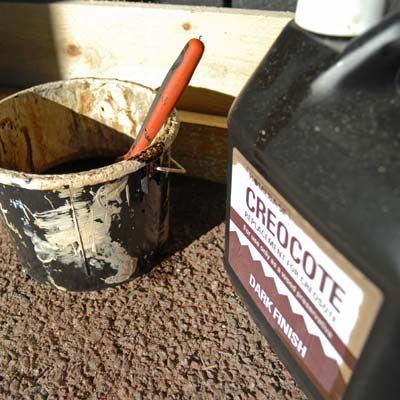
Creosote, a greasy black liquid used as a wood preservative and sometimes called coal-tar pitch, is classified as a carcinogen by both the International Agency for Research on Cancer and the EPA. Exposure to creosote can cause chemical burns, convulsions, and kidney or liver problems. In severe cases, it can be fatal. Coal-tar creosote is also a water pollutant.
While no longer available for consumer use, creosote may still be present on old railroad ties or fence posts around your property. Some herbal remedies for skin problems may contain creosote leaves—these should be disposed of promptly.
PFOS
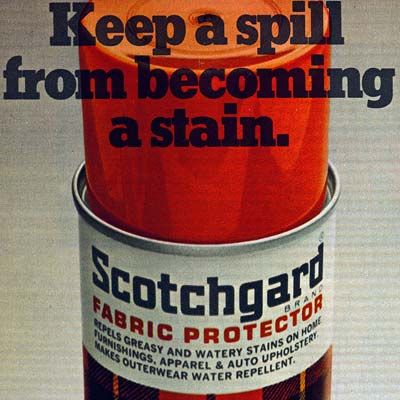
Perfluorooctane sulfonate (PFOS) was once a miracle ingredient in stain-resistant products such as 3M’s Scotchgard. However, studies have shown that PFOS accumulates in human tissue and may pose significant health risks—it’s one of a number of long-lasting manufactured chemicals referred to as PFAS. While not yet definitively linked to specific health issues, peer-reviewed research shows potential connections to cancer, liver damage, and developmental problems in children.
3M phased out PFOS production in 2000, but you may still find older products containing this chemical. Some include old cans of stain-resistant sprays or treatments.
How To Identify These Toxic Products
Identifying old, toxic household products requires careful observation and research. Look for the following:
- Containers with no labels or illegible text
- Old, dusty containers with faded labels
- Products with ingredients like DDT, lye, or lead listed
- Unusual chemical odors from stored products
- Warnings about toxicity or poison on the label
When in doubt, treat any unidentified chemical product as potentially hazardous.
Safe Disposal Methods for Hazardous Household Items
Proper disposal of toxic household products is crucial to protect both human health and the environment. Here are some guidelines:
- Contact your local waste management authority for disposal guidelines.
- Don’t throw hazardous materials in regular trash.
- Keep products in their original containers when possible.
- Never pour chemicals down drains or onto the ground.
- Participate in community hazardous waste collection events, such as special collection days or permanent drop-off locations for household hazardous waste.
Modern Alternatives to Toxic Old Products
Today, there are many safer alternatives to these toxic old products, such as the following:
- Eco-friendly cleaning products made with plant-based ingredients
- Lead-free paints and coatings
- Mechanical traps or electronic deterrents for pest control
- Natural pesticides such as diatomaceous earth or neem oil
- Nontoxic wood preservatives and stains
Always research and choose products with lower environmental impact and reduced health risks.
Our Conclusion
The presence of old, toxic household products in our homes poses significant risks to our health and the environment. It’s crucial to identify these dangerous items, dispose of them properly, and replace them with safer alternatives. Remember, when in doubt about any old household product, it’s always best to consult with professionals and err on the side of caution.
